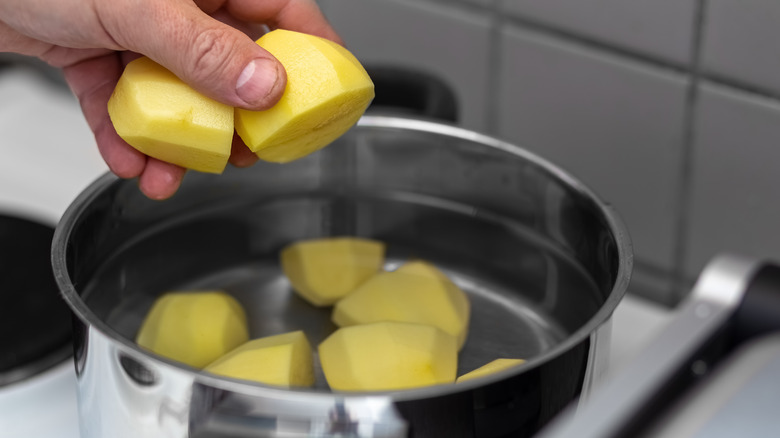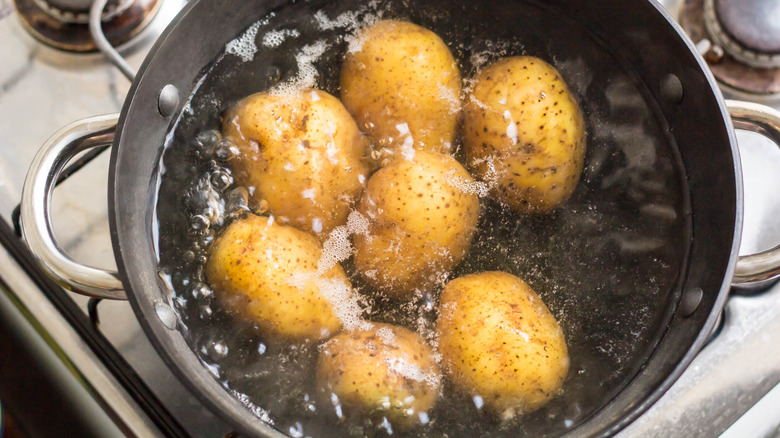Stop Making This Common Mistake When Boiling Potatoes
From French fries to hash browns, au gratin or mashed, there are many ways to transform a potato. But, no matter how simple or complicated the recipe may be, it often starts with cooking potatoes in hot water. This may seem like a foolproof task, but there's actually a right and a wrong way to boil a potato. If you've ever bitten into a potato only to find out it's raw on the inside and fully cooked on the outside, more likely than not, it's due to the fact that it was boiled incorrectly.
According to Chef Kevin McAllister of Café Robey in Chicago (via Cooking Light), potatoes don't need to be brought to a full boil. This causes the outside of the potato to cook at a faster rate, and leaves you with unevenly cooked potatoes. As Fine Cooking explains, there's a difference between a gentle boil, a regular boil, and a full or rolling boil. A rolling boil is when bubbles are forming continuously, causing the water to be in constant motion. For potatoes, it's best to opt for a regular boil instead. This generally occurs at 212 degrees Fahrenheit, when large bubbles rise to the surface and form steam.
How to know when potatoes are done boiling
If you don't have a thermometer to check the temperature of the water, Better Homes & Gardens suggests bringing it to a boil and then lowering the heat to medium-low or low. This will ensure that it doesn't reach a full boil. Cooking times vary depending on what type of potato you're using as well as the size, but for red potatoes, new potatoes, or cubed russet potatoes it's about 15 minutes. For quartered potatoes, you'll need a little more time, about 20 to 25 minutes.
You may be tempted to turn up the stove to get the potatoes to cook faster, but as Bon Appétit explains, you want them to cook evenly and all the way through. For best results, therefore, the publication recommends cooking the potatoes in cold water to start.
After the 15 to 25 minute cooking time, you can check the doneness by taking a fork to each potato. When you pierce the flesh it should go through without any resistance and slide out easily.

